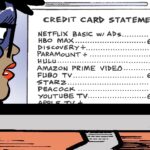 Todd Haskell began his new job as Hearst Magazine Digital’s chief revenue officer less than a month ago, joining the publisher of magazines such as Cosmopolitan, Esquire, Elle and Good Housekeeping to manage the business side of the 28 related websites and 14 mobile properties. He previously served six years as the group VP of advertising at The New York Times.
Todd Haskell began his new job as Hearst Magazine Digital’s chief revenue officer less than a month ago, joining the publisher of magazines such as Cosmopolitan, Esquire, Elle and Good Housekeeping to manage the business side of the 28 related websites and 14 mobile properties. He previously served six years as the group VP of advertising at The New York Times.
To hear Haskell tell it, the job at Hearst is in many ways simpler than his post at the NYT. First, he says the Hearst properties’ “aspirational” qualities appeal to marketers across a range of categories, particularly women. Secondly, while the NYT has notably grappled with the rise of programmatic advertising for the past year, Hearst has embraced exchanges through the private marketplace it established under Haskell’s predecessor, Kristine Welker (who moved over to become publisher/CRO of Hearst’s Dr. Oz magazine).
Before he left the NYT, Haskell established the company’s response to exchange-based buying and he’s taken some of that understanding to his new post at Hearst.
We spoke with Haskell and Mike Smith, who joined the company from Forbes Media this summer to become VP of revenue platforms at Hearst Magazines Digital.
AdExchanger: What attracted you to the job, Todd? How do you see your new roles?
TODD HASKELL: One of the things that is really exciting about this is how ambitious Hearst is about building a best-in-class digital operation. We already have 20 of the greatest content brands in the world. Troy Young, who joined a few months ago as president of digital, has said that he wants to supercharge what we do with these brands online to go from what has historically been a monthly relationship with our readers to something that will be continuous and daily. That will create an enormous advertising opportunity and that’s what attracted me.
Mike is an incredibly talented guy in understanding the underlying infrastructure and technology in terms of both operations and revenue platforms. We’re going to be working very closely together. As we scale the size of the business, in terms of the size of the audience and the level of engagement we match to advertising, Mike and I are going to be partners in not just building up the direct premium business, but in taking advantage of what’s going on in the programmatic space, which can very much complement that direct business.
MIKE SMITH: I’ll be working with Todd to support the direct sales business and manage the technology platforms that are becoming an increasing part of the ad sales process. I’ll be coordinating our tech platforms, which include our programmatic efforts, but also our data-management systems, with marketers and the agencies. Lastly, workflow management is another crucial area I’ll be working with Todd and his team on. There’s a complex system that serves the sales development through every part of the deal cycle, from campaign schedules to ad delivery to contracts.
You also mentioned that you’ll be managing Hearst’s DMP, Core Audience. How will you two partner on that?
MS: Core Audience is its own technology platform. It’s a commercial product and is licensed by a lot of other publishers – not just Hearst – and Forrester ranked it as one of the top data-management platforms last month as part of an industry review. It’s not just internal, but it is critical to what Hearst Magazines Digital is doing.
TH: Obviously, I’ll be working with Mike on leveraging Core Audience for Hearst’s publications.
In the months before leaving the NYT, you had worked to build out that complement from programmatic to direct sales. What did you learn from that process?
TH: A big part of programmatic is just taking out the organizational friction around buying. Programmatic is not about cheap. It’s about ease of purchase, by making the process smarter through the leveraging of technology and data. And what Mike brings to the party is expertise in how to partner with different types of buying organizations to make that process easier. As we build up the publishing velocity and the increase the sizes of our audience and amount of inventory, programmatic will become more important to Hearst.
What are the priorities for programmatic at Hearst, which has had a private marketplace powered by PubMatic for the past year? I recall that mobile was considered a possible next step.
TH: The partnership with PubMatic is very important to us. We’re also looking at all the channels available and looking to all kinds of partners that will help us optimize the inventory we have.
But mobile is not a priority in the programmatic space right now. To brands like Cosmopolitan, where mobile usage is becoming increasingly vital, we’re thinking more about building out our native offering. A lot of work has already been done here in terms of that native focus, but I think we can do more. Readers come to brands like Hearst’s to get information that often leads to purchase behavior. It’s a very different relationship that readers have than the one I was used to at The New York Times, where so much of it was around daily, global and national news. So native is a powerful, compelling idea for Hearst content, which revolves around men and women’s lifestyle, fashion and luxury.
MS: The nature of mobile – the smaller screen size, the focus on social media and immediacy – are perfect for native advertising. Native is an important product. The programmatic infrastructure here that Todd and I are leading could eventually have a role to play in that area.
Video was another area at the NYT that you explored as a larger ad vehicle. Is the situation the same at Hearst?
TH: It’s the same kind of dynamic. As I say, so much of the kinds of content in Hearst publications is geared towards helping consumers make purchasing decisions. So it lends itself perfectly to video as well. In many ways, what was exciting about video at the Times is even more so at Hearst. Videos from Aleppo in Syria are compelling, of course, but they’re hard to monetize. The videos at Hearst generally are clearly monetizable and video will be a serious part of the ad strategy.













